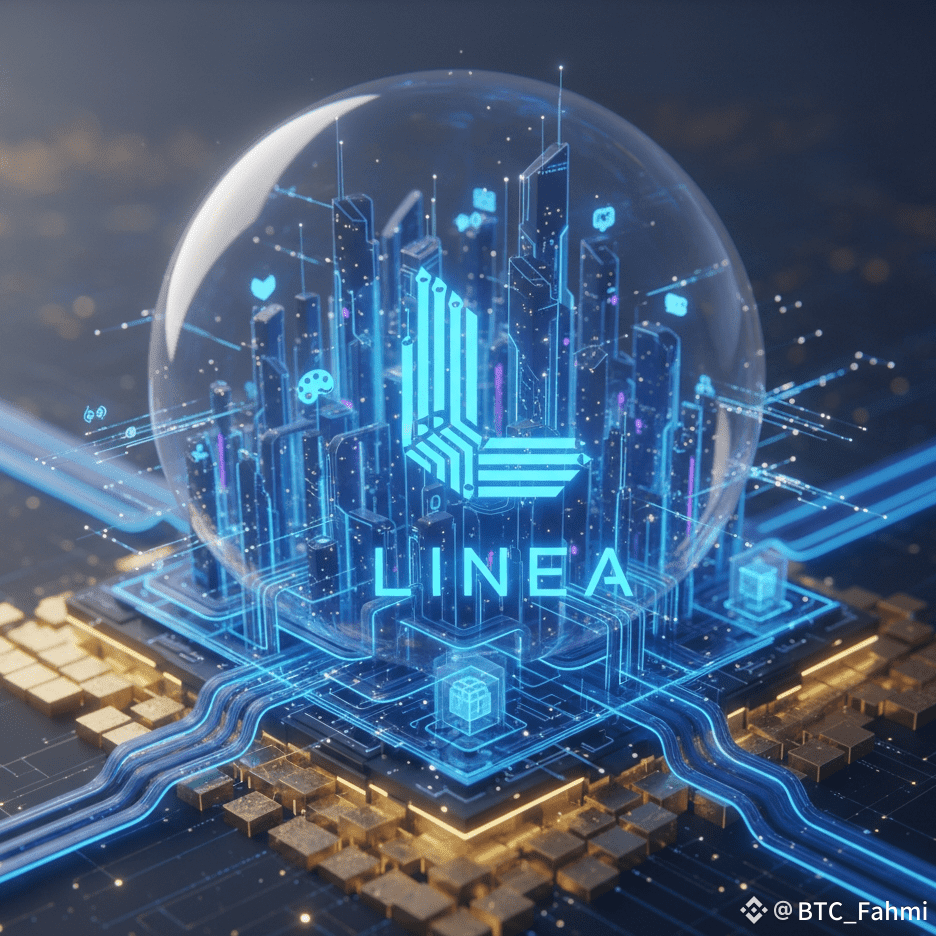Linea is a network that makes using Ethereum faster and cheaper. Without changing what makes Ethereum special. It is a “layer 2” built on top of Ethereum. Ethereum stays as the main secure base layer and Linea handles most of the work on its own network. This way you still get Ethereum’s strong security but your transactions feel quicker and cost less gas.

Linea uses a technology called zero-knowledge proofs. In simple terms, many transactions happen off the main Ethereum chain, on Linea. After that Linea creates a special proof that shows all those transactions were processed correctly. Instead of checking each transaction one by one Ethereum only checks this proof. If the proof is valid Ethereum accepts everything inside it. This keeps Ethereum from getting overloaded while every action is still fully verifiable.
For developers, Linea is easy to work with because it is a zkEVM. That means it behaves very similarly to Ethereum itself. You can write smart contract in Solidity. And use the same tools you already use on Ethereum with little or no change. Developer do not need to learn a totally new system or rewrite their code from scratch. They can move existing apps to Linea or build new ones while keeping the same way of thinking they already know.
For users, the benefits show up as lower fee and smoother apps. Sending transactions playing blockchain games or using DeFi feels less stressful because gas costs are much smaller and things confirm faster. Small actions that used to feel too expensive like tiny payments many in game. Moves or frequent DeFi trades become normal and affordable. When people do not have to worry about gas all the time, they experiment more, use more apps, and the whole ecosystem becomes more active.
Linea’s ecosystem is growing across different areas. DeFi projects use it to handle a lot of trades without fees becoming crazy. Game developers create richer, more interactive worlds that need many quick actions. Social and creator platforms try ideas that require lots of small updates, posts or transfers. Because activity comes from many different types of projects the network does not depend on just one trend, which makes it feel more stable and healthy.
The team behind Linea also care
about user experience. They work on things like account abstraction and smart wallets. Which can make using Web3 feel closer to using a normal app. They are also improving bridges. So people can move funds between chains more easily and safely. When wallets and bridges feel simple and trustworthy more new users are willing to start using the network and keep using it in their daily lives.
Linea is designed for the long term. It does not try to replace Ethereum. Instead, it uses Ethereum as the secure settlement layer and takes on the job of running a large number of transactions on layer 2. This design keeps strong security while giving space for high performance and scale. That makes Linea a good choice for serious applications that need reliability, predictable behavior, and room to grow.
Because Linea’s zkEVM turns many transactions into compact proofs developers can build complex apps and still expect stable fees and good speed. They do not have to worry that a busy day on Ethereum will suddenly make their app too expensive or too slow. This makes it easier for teams to plan, ship new features. And keep improving their products over time.
For everyday Web3 users, using Linea can change. How often and how comfortably they interact on chain. You can mint NFTs without stressing about sudden gas spikes, try DeFi strategies that need many steps, and test new apps more freely. When users feel safe doing more on-chain actions, more liquidity and activity follow, which strengthens both Linea and Ethereum overall.
Across finance, gaming, identity, and creator tools, many kinds of projects are choosing to build on Linea. This mix of use cases brings in different communities and incentives helping the network stay active even if one sector becomes quiet for a while. In the bigger picture Linea is part of Ethereum’s shift to a layered model, where Ethereum provides the security and settlement and networks like Linea handle fast cheap execution. If Linea keeps growing in this direction it can support millions of transactions per day and make apps possible that were not realistic on Ethereum alone. For anyone serious about building or using Web3 in real life Linea is a network worth watching and trying.



